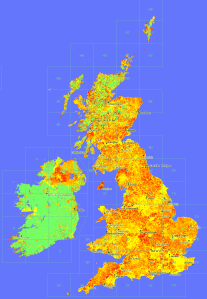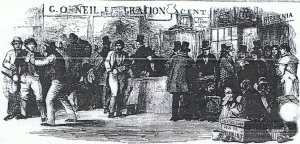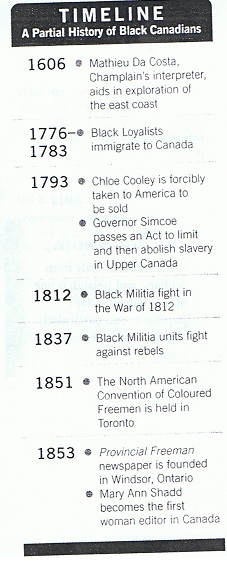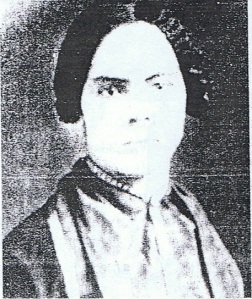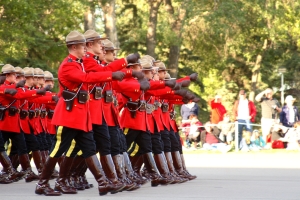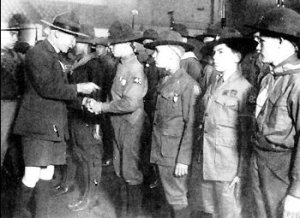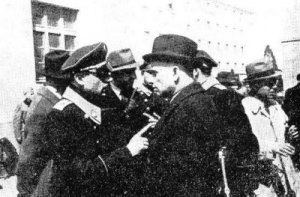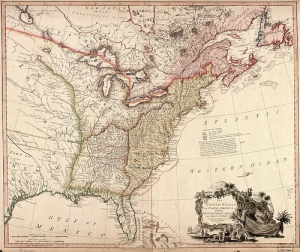After the Second War II, Canada’s immigration system changed drastically. The first policy that was issued in regards to immigration was by Prime Minister Mackenzie King’s directive of May 1, 1947. This policy described how the Canadian government would regulate immigration by inviting those that wouldn’t alter Canada’s culture. In essence, the government approved of the concept of a melting pot, where all immigrants would have to dispose and discard all their language, religion, culture, music, etc. and become part of the English-speaking or French-speaking. This policy essentially makes it easier for the government to select immigrants from preferred ethnic groups which included British, American, and northwestern European people (the whitest people they can find). The Canadian government believed that these ethnic groups could be easily assimilated, for they were socially, culturally, and physically similar to the English ethnicity.
Canada discouraged the arrival of non-preferred ethnic groups, particularly those coming form oriental and Mediterranean countries. Regardless of the fact that the Chinese and Indians were able to sponsor relatives since January 1, 1947, Asians were highly discourage from immigrating until the 1960s. This “discouragement” can be witnessed by the small number of non-preferred groups between the late 1940s and early 1960s. Not only Chinese or Indians, but the Canadian Government recognized the French nationals to be “non-preferred” until 1948, when PC 4186 allowed any citizen from France to immigrate to Canada as long as they had sufficient financial support until they found employment.
Germans were one of Canada’s most favorite immigrants, regardless of them being enemy alien after WWII. This displays how Canada was racist and ethnic based in its selection of immigrants. In fact, polls depicted that most Canadians would prefer the immigration of Germany enemy aliens than Asians or Mediterranean. By 1952, to sustain and keep such racial preferences, the Canadian government essentially the erased the title “enemy aliens” against Italy and Germany.
At the end of World War II, European’s war victims were not permitted to immigrate to Canada. There were certain initiatives introduced by the federal government, which included labour requirement and ethnic prejudices. Canadian government officials were very selective in terms of who to bring into their country. A medical and character examination must be passed before acceptance into Canada. In fact, in London, an RCMP post was issued just for these particular exams. Canadian officials rejected anyone that were suspected to have a communist belief, in addition to having peculiar physical traits, including handicaps, or weird political views.
The Citizenship Act of 1947 was passed by the Canadian government, in order to create Canadian citizenship independent of the British status. To obtain Canadian citizenship, the potential citizen must acquire admission to Canada legally, have 5 years residency in this nation before application, have evidence of a good person (characteristics), sufficient knowledge of either English or French (or 20 years of residence), sufficient knowledge of responsibilities and privileges of Canadian citizenship, and to state an oath-like statement to reside permanently in Canada. Rights and privileges for British subjects was integrated under this new Act. British subjects who had previously completed the 5 year residency mandate at the passage of the Act by default became Canadian citizens, and still had the right to vote and receive old age pensions. Until the 1980s, these rights of the British subjects were retained. Through this Act, receiving Canadian citizenship allowed Canadian citizens to sponsor relatives from Europe. Essentially, any citizen from Canada had the option, under this Act, of sponsoring relatives as long as he/she could ensure employment in mining, agriculture, and lumbering.

Displaced Person Camp
One of the main concern about the Canadian government, along with British, Austrian, and American governments, is what to do with the large population of DisplacedP
persons. Central, southern and eastern Europe and Baltic States were most of the refugees came from, where they were refused to or isn’t able to return to their homeland for political or economical reasons. Conditions in “DP” (displaced persons) camps were atrocious; previous allies and enemies, from ex-Nazis to Jews, had only some parts of “official” documentation to prove who they were, in terms of nationality, and what role they placed in the Second World War.
PC 3112 was passed on July 23, 1946, which was a policy established by the Canadian Orders in Council, supporting refugees and Displaced Persons. Through this policy, various European Displaced Persons were able to enter Canada. Amongst them, the first Displaced Persons to enter Canada were 4,000 single ex-members of the Polish Armed forces. These people were a member of the Allied Forced during World War II, and once they were in Canada, they served under the Canadian agricultural sector. Cheap labour for unskilled work, such as mining, lumber, and construction provided Croatian and Serbian refugees work in Canada. Furthermore, the Prime Minister, on November 7, 1946, announced that the government would commence emergency procedures to help with the settlement of refugees and Displaced Persons by collaborating with the Intergovernmental Committee on Refugees (IRO). Churches soon joined in this initiative to help these people, in that they organized various recruitment campaigns in European camps. Soon afterwards, in 1947, the Canadian Christian Council for the Resettlement of Refugees (CCCRR) was established through the coalition of six Canadian religious and ethnic organizations. The organization involved in the CCCRR included: the Catholic Immigrant Aid Society, German Baptist Colonization and Immigration Society, Canadian Lutheran Relief, Latvian Relief Fund of Canada, Canadian Mennonite Board of Colonization, and the Sudetan Committee.
Canada, however, did not always accept all the Displaced Persons. For instance, in Ottawa in the year of 1949, 18 Arab families were denied entrance to Canada simply because they seemed too alien and not “Canadian” enough. Not only that, Canada reluctantly
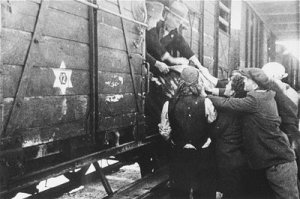
A group of Jewish people
allowed Jews, in that our nation accepted the least number of Jews, in comparison to the United States or Australia. Frederick Blair,
departmental secretary of the Department of Immigration and Colonisation, and Prime Minister Mackenzie King, in office until 1948, both had anti-Semitic views, which partially explains why Jews were rarely admitted to Canada. Less than 10% of immigrants to Canada were Jewish between 1947 and 1952.
Displayed Persons were permitted into Canada under the sponsored labour scheme, which mandated them to sign a contract agreeing that they would work in fields of either farming, mining, domestic service, railway work, or other forms of manual labour for at least 2 years. Another scheme they could come to Canada was the close relative scheme, in that Canadian citizens were able to sponsor their close relative who were in Europe. Female Displaced Persons were only permitted to come to Canada as domestic contract workers between the years 1947 and 1952.


